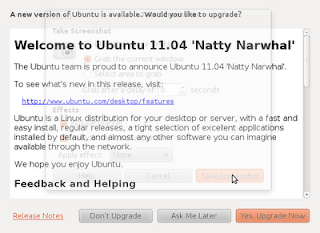But every so often, mostly by happenstance or serendipity, I come across a treasure. Once it was Zora Neale Hurston's Their Eyes Are Watching God; another time it was Marilynne Robinson's Housekeeping, then Cormac McCarthy's All The Pretty Horses: the sort of book, that, while you are reading it, you are aware that you are being visited by something special, and you try to enjoy every bit, sipping delicately, all the while becoming so absorbed that 45 minutes passes and you come up for air and wonder where the time has gone.
Paul Harding's Tinkers is such a book.
The tinkers of the title are George Crosby and his father Howard, as well as the various family members that surround them. Howard Crosby was a peddler who drove a wagon around the rural New England backcountry, selling this and that to "the backwoods people":
He tinkered. Tin pots, wrought iron. Solder melted and cupped in a clay dam. Quicksilver patchwork. Occasionally, a pot hammered back flat, the tinkle of tin sibilant, tiny beneath the lid of the boreal forest. Tinkerbird, coppersmith, but mostly a brush and mop drummer.
George has all his father's primitive, earthy skills, as well as more modern talents, and becomes a clockmaker of some renown:
The wallpaper in George's basement workroom had a pattern of larch branches on a dun-colored background. Clocks in various states of repair and disrepair hung on the wall, some ticking, some not, some in their cases, some no more than naked brass works fitted with their pairs of hands. Cuckoos and Vienna regulators and schoolhouse and old railroad station clocks hung at different heights. There were often twenty-five or thirty clocks on the wall.
At its surface level, the book is about George's passing; it starts and ends with George on his deathbed, and the stories are mostly told through flashbacks and reminiscences. But that is only the surface story; as with all great literature, this book is concerned with much more deeper subjects: "What persists beyond this cataclysm of making and unmaking?"
Two deep themes run through the book and are investigated and examined and returned to in various ways. The first is the notion of time: what it is, what it means, what it says about us and about our lives. George, the clockmaker, thinks about this constantly:
That was it, he realized: the clock had run down. All the clocks in the room had run down -- the tambours and carriage clocks on the mantel, the banjo and mirror and Viennese regulator on the walls, the Chelsea ship's bells on the rolltop desk, the ogee on the end table, and the seven-foot walnut-cased Stevenson grandfather's clock, made in Nottingham in 1801, with its moon-phase window on the dial and pair of robins threading flowery buntings around the Roman numerals. When he imagined inside the case of that clock, dark and dry and hollow, and the still pendulum hanging down its length, he felt the inside of his own chest and had a sudden panic that it, too, had wound down.
When his grandchildren had been little, they had asked if they could hide inside the clock. Now he wanted to gather them and open himself up and hide them among his ribs and faintly ticking heart.
Harding also spends much of the book meditating about nature, and about man's relationship to nature. Howard, who is a man of the woods, is compelled by the wilderness:
How can I not wonder what it would be like to sit in that cold silver water, that cold stone water up to my chin, the tangled marsh grass at the level of my eyes, sit in the still water, in the still air, bright day behind me lighting the face of everything under the dark millstone cloud lid in front of me, watching the storm coming from the north?
Howard knows everything about nature, but what he knows most of all is that to know nature, you must open your eyes and observe. His meticulous instructions about how to build a bird's nest run for pages, but in the end they are simple and direct:
Spend as many a spring afternoon as manageable watching the birds themselves weave their homes; such observation will help immensely in learning the particular stitch required.
Mostly, though, Harding is just a sheer joy to read. His skill with words is astonishing; can this really be his first novel? Here he is, in perhaps my favorite passage from the book, describing a boy at play in a creek in the woods:
What of miniature boats constructed of birch bark and fallen leaves, launched onto cold water clear as air? How many fleets were pushed out toward the middles of ponds or sent down autumn brooks, holding treasures of acorns, or black feathers, or a puzzled mantis? Let those grassy crafts be listed alongside the iron hulls that cleave the sea, for they are all improvisations built from the daydreams of men, and all will perish, whether from ocean siege or October breeze.
This is Ozymandias in prose, indeed.
I hope Mr. Harding writes many more books; I know I will be eager to see what he writes next.
